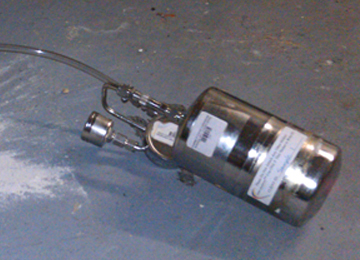The migration, accumulation, and intrusion of harmful vapors into buildings from contaminated soil and/or groundwater has been a focus of state and federal regulators, as well as the subject of numerous legal actions in recent years. As a result, evaluation of the potential presence and possible migration of such vapors has become an important and routine part of the real estate transaction due diligence process.
Prior to a property’s purchase, a Phase I Environmental Site Assessment (ESA) should be performed. The ESA is the industry accepted method to conduct “All Appropriate Inquiry” (AAI), as defined by federal law. An ESA is conducted to identify known or suspected contamination on or near the site, thereby providing environmental contamination liability protection for the prospective purchaser. If a Phase I ESA identifies potential contamination, then a Phase II ESA is recommended, which typically includes soil and/or groundwater sampling and testing for contamination.
In the past, the potential for harmful vapor migration was not typically raised in a Phase I ESA unless known or suspected contaminated soil and/or groundwater was identified by the Phase I ESA. However, in June 2010, the American Society for Testing and Materials (ASTM) issued the Standard Guide for Vapor Encroachment Screening on Property Involved in Real Estate Transactions (E2600-10). The standard provides a standardized and industry accepted method for evaluating the potential for harmful vapors to migrate onto a property and can be completed separately or in conjunction with a Phase I/II ESA. This new evaluation is known as a Vapor Encroachment Screen (VES).
A VES involves a two-tiered approach to evaluate the potential for vapor migration emanating from contaminated soil and/or groundwater, either from on- or off-site sources. The VES process details a systematic approach to identify known or suspected contaminated properties within a set search radius using a historical and government records search (Tier I Review). If a contaminated site is identified or suspected, both non-invasive and invasive methods can be employed to further evaluate the potential for vapor migration pathways onto the property; therefore, providing an assessment of potential environmental risk and liability associated with the site (Tier II Review). Analysis of these data sources permit the prospective purchaser and the environmental professional to decide if the level of risk is acceptable, or if additional evaluation (i.e. exposure evaluations) is needed.
Some recent legal opinions suggest failure to address the potential for harmful vapor migration during the due diligence process is inconsistent with the AAI rule and could result in liability exposure for the prospective purchaser. The VES standard states that while not required to satisfy the AAI rule, conducting a VES is good commercial and customary practice for evaluating the risks imposed on a site by this issue. Moreover, the ASTM Phase I ESA standard is currently being revised for release in mid-2013 and it appears that the VES process will be specifically referenced in the Phase I ESA standard making it explicit that vapor migration should be assessed during a Phase I ESA no differently than impacted soil or groundwater. In other words, the environmental due diligence process will become more involved and complicated as this dynamic issue emerges.
Authors – Jim Succop, PG and Adam Meurer, PWS, LEED AP

